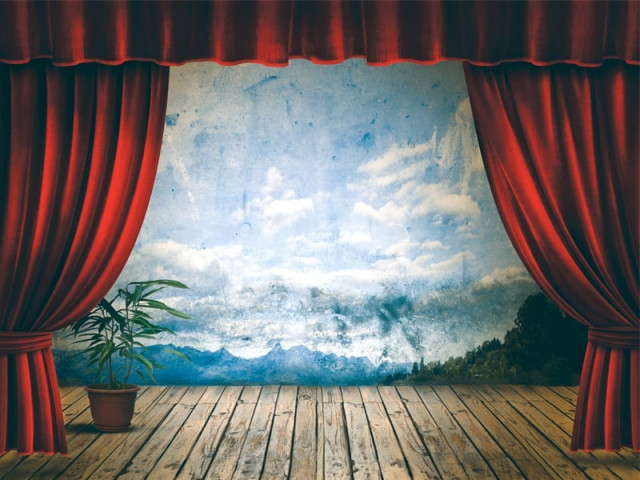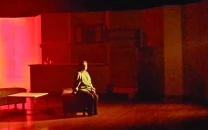Mise-en-scene: Setting the stage
Set design plays a dominant role in powerful storytelling.

Mise-en-scene: Setting the stage
Generally referred to as the ‘mise-en-scene’ (placing in the scene) or the ‘visual theme’ of the play, set design is a critical aspect of a play. In the local theatre scene, the lack of skilled designers – who can carefully design a set with adequate props and a complementary backdrop – makes set designing a difficult task.
“There are not enough trained set designers in Pakistan since there is a tendency to overlap specialities,” says Flora Mahmoud, who directed the play Avanti. “The set is very important as a good set can make or break a play. This is especially true for a musical, where the focus is on the audio and visual effects.”
Mahmoud explains that currently she knows of only two schools in Pakistan that are training students in set-design. The National College of Arts (NCA) in Lahore and National Academy of Performaing Arts (NAPA) in Karachi have courses in set design, but there is still not enough specialised training for designers to be streamlined in the current industry.
Asma Iqbal, a set designer for Shah Sharabeel’s Bombay Dreams shares that sets are important in developing a play’s ambience. She adds that NCA had taught her the basic technicalities of how to design a space.
While describing the process of set designing for Avanti, Mahmoud says that the design team had invested in steel frames, and, on top of that, they had several printed flexes, so that the stage (which in reality was pretty simple) would look grand and remain affordable at the same time. The planning of the stage generally takes place around 15 days before the play is launched, states Mahmoud.
For many directors the challenges of making a properly designed set with less resources is difficult, as budgets for plays are generally low and quality craftsmanship is harder to find with limited resources. Zain Adil, an architect and set designer – who has worked with directors such as Shoaib Mansoor and Umair Rana, explains that set design in Pakistan has never been a specialised endeavour; rather it is something that has evolved over the last few years with the growth of commercial theatre in the country.
“Before, directors or producers would point out an Indian film reference and try to copy it, but now stages help define a culture and are providing edutainment,” remarks Adil, who started out as an actor and producer and eventually transitioned into the role of a set designer. “Now in many instances, theatre is talking about critical issues and set design helps in conveying the message clearly.”
Adil elucidates that increasing numbers of people are taking interest in theory courses, but the old carpenters who have years of film and theatre experience provide a greater understanding on how to design sets. It is the set designer’s responsibility to find ways to work on the aesthetics, while keeping in mind the budgetary constraints.
Haji Abdul Sattar, a carpenter and a recognised backdrop designer affiliated with the local film and theatre industry, states that there has been a decline over the years in the number of skilled set designers. He explains that in the past, set design for both plays and films had an apprentice system in which young designers and carpenters would be trained to make sets. “The issue nowadays is that directors and people don’t have the time or money,” says Sattar. “This means a lot of people who were in the industry before are doing other work now.”
Sattar, who has also helped with stages in places such as Al Hamra, Tamaseel and other theatres says that, typically, a director comes up with an idea and then negotiates a budget. Moreover, he adds in the past there was an adequate industry for carpenters and designers to be employed but now much of the work means cutting corners.
Producer Umer Hameed shares that locally sets in theatres such as AlHamra had their own materials and most directors usually used paper skins to get the colours that were necessary for a stage design. According to Hameed, the cost of creating a normal stage could range anywhere from Rs20,000-Rs45,000. “A good set provides a feel-good factor to the audience and also creates the environment for the play,” says Hameed.
For most directors, the debate on how elaborate a stage design should be varies from play to play. Currently, the changes in theatre have meant that directors have started putting a more technical emphasis on the stage design. The result is that plays are providing better visual effects.
Published in The Express Tribune, August 25th, 2011.



















COMMENTS
Comments are moderated and generally will be posted if they are on-topic and not abusive.
For more information, please see our Comments FAQ